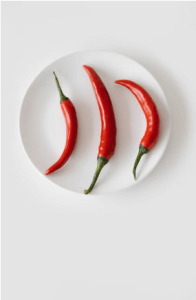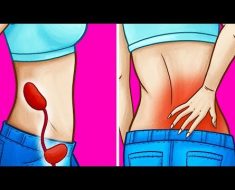Acidic Foods To Avoid
 I’m Dr. Jonathan Aviv. I’m an ear, nose, and throat doctor at a practice called ENT and Allergy Associates. I run the Voice and Swallowing Center for the practice. I’m also a clinical professor of Otolaryngology-Head and Neck Surgery, that’s another name for ENT at the Icahn School of Medicine at Mt. Sinai. I’m also the author of a book called The Acid Watcher Diet, that’s right here, a 28-Day Reflux Prevention and Healing Program. and Acidic Foods to Avoid with Dr. Jonathan Aviv The idea is to create a diet that replaces medication. Initially, it was thought of just for acid reflux disease. As more and more science is coming out, we’re realizing that this diet is really an anti-inflammatory diet for everyone.
I’m Dr. Jonathan Aviv. I’m an ear, nose, and throat doctor at a practice called ENT and Allergy Associates. I run the Voice and Swallowing Center for the practice. I’m also a clinical professor of Otolaryngology-Head and Neck Surgery, that’s another name for ENT at the Icahn School of Medicine at Mt. Sinai. I’m also the author of a book called The Acid Watcher Diet, that’s right here, a 28-Day Reflux Prevention and Healing Program. and Acidic Foods to Avoid with Dr. Jonathan Aviv The idea is to create a diet that replaces medication. Initially, it was thought of just for acid reflux disease. As more and more science is coming out, we’re realizing that this diet is really an anti-inflammatory diet for everyone.
Acid reflux is really 2 types of conditions. The traditional acid reflux is the sensation of a feeling of burning starting in your stomach, climbing up into your chest. The reason it’s called heartburn, or heartburn is the main symptom is that the esophagus, which connects the throat to the stomach essentially sits on the heart, so you feel it in the mid-chest. and Acidic Foods to Avoid with Dr. Jonathan Aviv That’s traditional gastroesophageal reflux disease or GERD, but there’s another type of reflux. When you eat or drink something very acidic, and we could talk about what that means, it actually causes inflammation as you’re swallowing and not only affecting the throat but the sinuses, the ears, the lungs, and the vocal cords.
This is what trips people up because they’ll come in and they’ll say, “Oh my god, I sound like this,” and “I’ve been clearing my throat for weeks,” and “My allergies are acting up and I have a nasal drip and I need some anti-histamines and an allergy investigation,” when really, it’s the acidity of what they’re eating that’s triggering all these symptoms. and Acidic Foods to Avoid with Dr. Jonathan Aviv People say, “Oh, it’s just acid reflux. Take some medication, take some TUMS, you’ll be fine.” As it turns out, uncontrolled or insufficiently controlled acid reflux can lead to esophageal cancer. How could that be?
Well, what happens is, when you eat or drink acidic foods, again, whether it’s coming down this way or things coming up this way, you irritate the esophagus. You can imagine if you’re eating or drinking something acidic, this way or things coming up this way, the sensitive esophageal tissues get burned, and if you keep burning them, the tissues break down and in a certain number of cases, they transform into cancer cells. The way it was discovered is that the stomach has a certain type of cell that produces mucus.
It’s called the gland-producing cell. The esophagus doesn’t have gland-producing cells.
When these cells in the stomach start climbing up, think of it as if you’re heating something and the fire is rising. Well, these tissues go outside of their normal area and can become cancerous and it’s acidity that’s responsible for a lot of this. Esophageal cancer has been the fastest growing cancer in America and Europe since the mid-1970s. It makes you think, what happened in the mid-1970s? Two things happened.
One, the government, in an effort to prevent food poisoning, something called Botulism, which is a food poisoning that occurs when you eat contaminated food from a can or a bottle, they enacted a law called Title XXI. What they said is any food in a can, bottle or box needs to be acidified. There’s a number, that number’s around pH 4.4. As it turns out, the food packers, in an effort to prevent food poisoning, in an effort to keep the foods on the shelves for very long periods of time, tend to drop that number and add ascorbic acid, citric acid, things like that to really keep the liquids acidified.
That started around the mid-70s and if you look at graphs of the year versus the incidence of esophageal cancer, it starts to climb up. Around the same time, the food industry began to shift how they added sweeteners and shifted from cane sugar and beet sugar to a much less expensive, more readily available crop corn and developed high fructose corn syrup which today goes under many names and is sometimes hard to decipher, but what it is, is a very inflammatory sweetener. The inflammation in that sweetener, some of those chemicals, loosen the lower esophageal muscle. The reason why that’s a big deal is the acidic stomach sits underneath there. You have to think about what’s going on now.
You’re eating and drinking various acidic things and you’re having sweeteners that loosen, so it’s essentially a double whammy.
Acidic things this way, loosening this way, and it’s causing a lot of inflammation. Sure enough, slowly, steadily, the incidence of esophageal cancer, it’s called Adenocarcinoma. “Adeno” is the Latin term for gland, so it’s esophageal cancer, not from smoking and drinking in excess. This is from acidity began increasing then.
You can almost trace it back. In terms of who’s at risk, 75 million Americans have gastroesophageal reflux disease. We’re all at risk.
The scary thing is a lot of people don’t have the traditional symptoms. Only 1 out of 10 people that come to see me in the office are complaining of heartburn.
Most people complain that they have a drip, that they’re coughing, that they’re hoarse, and we have to ask them questions about what they eat. When’s the last time your doctor asked you any questions about what you eat? When I start asking people, “Do you drink soda or bottled iced tea?” They look at me like I have nine heads. Hey, it’s important to ask these questions.
If you’re not being asked these questions, say, “This is what I’m eating and drinking. Is this okay?” Or bring in even a 10-day food diary, or if that’s too much, a 3-day food diary. When you’re in the waiting area, you can just write that down. This is what I had for breakfast, this what I had for dinner last night, this is how many hours I stayed up after my last meal.
These are seemingly innocuous questions but really, you’re giving your clinician the keys to a lot of these symptoms. What we say about acid reflux, it’s 2 things. It’s what you eat and when you eat. What and when. What is things that are either acidic as you consume them or materials, foods really that have physiologic functions.
I’ll give you a perfect example. I call it “The Dirty Dozen”. There are 6 foods that loosen the muscle that separates the acidic stomach from the non-acidic esophagus and there are 6 foods or food categories that are extremely acidic as you eat them. Let’s start with the stomach side, what I call the “Dirty Half Dozen”. It’s coffee, chocolate, alcohol, mint, raw onion, raw garlic.
Everyone’s saying, “Oh my god, my 6 favorite food groups. I can’t eat anything anymore.” Not the case, but what all those substances have in common is they will loosen that muscle that separates the acidic stomach from the non-acidic esophagus.
When you take away that muscle, you loosen it, things here can shoot up. Now, coffee and chocolate have particular properties.
They’re not acidic, so when you hear, “Hey, I got low acid coffee,” what? Coffee has a pH of around 6, so just a little science, anything less than pH 7 is acidic. Anything more than pH 7 is considered alkaline. As you get lower and lower in the number, it’s more and more acidic. Things less than pH 4, 4 is the magic number, are extremely acidic, and can cause a lot of problems.
So we want to really stay above 4, and if we can’t, at least initially to heal, above 5. How do coffee and chocolate play in here? Coffee and chocolate, not that acidic, pH 6. But what do they do? They not only loosen the lower esophageal muscle but also increase acid production by the stomach.
The idea of an after-dinner coffee, say, Madrid style, it’s 9:00, 10:00 at night, you have a 6:00 a.m. meeting so you got to be lying down by midnight. “I’ll have a coffee.” You have your coffee and what happens?
It loosens the lower esophageal muscle and acid is produced.
It takes the stomach 3-4 hours to empty. You finish eating 8:00, 9:00, or 10:00, and if you’re not staying upright for 3-4 hours, when you lie down, you take away gravity and things come up. When you add something that produces acid in addition to lying down too soon, you can see you can have problems. There’s an enzyme in the stomach that breaks down a protein called Pepsin, P-E-P-S-I-N.
Pepsin normally sits in the stomach and gets activated in very acidic environments. The stomach is very acidic. Again, less than pH 4.
Pepsin was found a few years ago, not very long ago, to float. Where does it float to?
It floats up. It can sit on the vocal cords. It can sit in the sinuses. It can sit in the middle ear spaces, in the lungs. When you eat or drink something less than pH 4, it turns on and what you eat starts eating you.
Again, I call them the “Dirty half dozen”. Easy to remember. Two of them we shouldn’t be eating or drinking anyway, and what is that? Sugary or diet soda, sugary or diet bottled iced tea. Really, almost any beverage in a can, bottle, or box is very, very acidic.
The way I look when people say, “Oh, I just have 1 or 2 of those a month.” I say, “Only pour battery acid down my throat twice a month.” That’s what it’s like and people dismiss and I get the hand wave, no.
But then there are 4 healthy things which I call the “Four Under Four”, meaning the 4 substances under pH 4. What are they?
Citrus, tomato sauce, not tomato, tomato sauce, vinegar, wine. Again, I can hear the groans. “I have the best wine collection east of the Mississippi.” Okay, but you should be aware, if you’re coming in with certain symptoms and you’re eating and drinking certain things, this is why.
When you eat or drink, say, balsamic vinegar, it’s acidic and it releases, activates tissue-bound pepsin, and causes inflammation.
It gives you hoarseness. It swells the sinuses. It can irritate the lungs. This we really didn’t know and it gets a little more interesting because as little as 2 years ago, it was shown that when you have an acid injury, it’s not just a superficial injury that if you keep, keep eating or drinking certain things, it gets deeper and deeper. That’s not what happens.
As soon as you eat or drink something that’s very acidic, you get a body-wide inflammatory response. This was absolutely shocking. It only came out in 2016 and the reason why this is so important, you’re getting a body-wide inflammatory response.
What was clinical, you know, we’re saying to patients, “Get on the Acid Watcher Diet. Avoid these very acidic things,” and then they’re coming back to us and saying, “Hey, my psoriasis went away.
My Crohn’s disease improved. My irritable bowel improved.” As it turns out, this body-wide inflammatory response is what’s happening. While we’re recommending this diet, we’re paying attention to what our patients are telling us and how the science is sort of back into what we developed and it’s telling us that it’s going to help inflammation everywhere.
That was wonderful to see and when science supports clinical observation, that’s always something that you could build upon.
Let’s talk about smokables for a second. Every day, people come in and they say, “I don’t smoke, I just vape because vaping’s okay because you’ve taken out the tar so I won’t get cancer.” I wish that were the case. That’s not the case. Again, very recently, there was a big study out of the Department of Pediatrics at UC San Francisco that showed that the chemicals used in the vaping process, the propylene glycol and related compounds are carcinogenic.
They identified 5, they’re all carcinogenic. We’re talking beyond acid reflux. We’re talking about an inflammatory response to the lungs as well as to the vocal cords. We don’t know yet the effect because it hasn’t been around long enough to see but when some of the most respected scientists in the world are saying these inhaled agents, even though it’s not as hot, you’re still doing enough to them to cause tissues to transform or become cancerous.
It really gives you pause.
Now, ingestibles are a different story. If you want to, say, eat marijuana we’re going to go to marijuana a little bit if you’re going to eat marijuana, okay, it’s not carcinogenic as far as we know. Your gummy bear or the equivalent, but as soon as you ignite it, you release something called a TIF. A TIF isn’t a digital file. It’s a tumor initiation factor.
You have to be very, very cautious when you light something up.
Eating it is one thing. Lighting it up, burning is another and you get into a very, very tricky, dangerous area. How this backs into acid reflux and some that we’re talking about here, tobacco now and marijuana similar although probably more potent will loosen the lower esophageal muscle, again, taking away some of the natural protective mechanisms that we have. The cigar is one of my favorite topics because people come in and say, “I don’t inhale,” and I always think, how can you tell a microscopic smoke particle where to go?
I spent almost 10 years as a Director of Head and Neck Surgery at Columbia doing cancer surgery on cigar smokers. We had to remove part of their lip, part of their tongue, part of their cheek. Even though they told the smoke to go that way, it didn’t listen and went that way. These are carcinogens. You can call it what you want, that’s what they are.
The, say, 1,000 head and neck surgeons in the United States don’t have time to tweet about this or post-Instagram posts about it because they’re busy taking out these tumors, but that’s what happens. Smokables are very risky.
Allergies are a specific response to certain substances, but what do allergies do or cause? The tissues swell. They get irritated.
Sometimes, when someone comes in with sinus-type complaints pressure, drip they sound like this because their nose is clogged, they’re clearing their throat a lot, it mimics allergies. But as we discussed, when you eat or drink these handfuls of very acidic foods, the healthy onesÑ citrus, tomato sauce, vinegar, wineÑ you can actually swell your sinuses and it mimics exactly the symptoms of someone who’s, say, allergic to ragweed or a grass. How do we tell the difference? We get formal allergy testing which our allergists and ENT and Allergy Associates can do. It’s very straightforward.
Very often, the patients will come back, you don’t have allergies.
They say, “Why do I sound like this?” Well, it’s what you’re eating or drinking. We’ve now educated everybody and our first line is when people come in with allergy-type symptoms, yes, we’ll send them for an allergy investigation or maybe they’ve already had an allergy work-up, but we will tweak their diet a little bit and again, let them know. When you explain the science, it makes sense.
If you just say, “Hey, it’s what you’re eating,” you don’t give an explanation, they think you’re nuts. But when you say, “Look, it’s pepsin. Pepsin floats. It sits here. You drink.
“Oh yeah, I have, you know, my favorite dressing is was raspberry vinaigrette. I have it only at lunch and at dinner every day for the past 9 years. It’s the best. It’s the best.” Right?
That’s how they sound. “It’s the best!” Well, maybe not. Let’s tweak it. Let’s try something else.
This is where allergies and acidity sort of cross. Most people probably don’t have allergies. It’s probably what they’re eating and drinking. It gets confusing. “I have acid reflux?
What’s that got to do with allergies?” Well, it’s about swelling and the question is, where is the swelling coming from? We want to rule out every way possible how something can get inflamed. Sometimes it is allergies. Sometimes it is what you’re eating.
Sometimes it’s both. There is a documented relationship between being significantly overweight, acid reflux disease, and esophageal cancer. The simple way to think of it is when you have a lot of pressure here, you’re actually pushing on the stomach, especially in certain positions and the inflammatory material comes up as we talked about earlier, the acidityÑ and this is a very direct correlate of acidity coming up and pressure from weight coming up. There are associations. Now, what we have found is anti-inflammatory diets will, especially as you follow them, you will tend to lose weight.
There are 2 ways we’re doing this.
One, having foods that aren’t very acidic so you reduce inflammation, and then it’s also a high-fiber diet. When you’re eating plenty of fiber, you’re actually moving things along in the body and it was again recently shown that when you eat a lot of fiber, you reduce inflammation in the gut. You actually help the gut microbiome. A test for acid reflux comes in many forms.
One is by history, you know, what the patients are telling us. Say, “I come home every night at 9:30, 10:00. I just got back from the gym. I grab something to eat. I’m exhausted and I lie down.
” Okay, we know the stomach takes 3-4 hours to empty, simple math, it’s only 90 minutes, stuff’s going to come up.
Again, these are people with symptoms. People are coming in, “I’m hoarse,” “I got a lump in my throat,” “I can’t swallow,” “I got a sinus drip,” and 1 out of 10 are saying, “I have heartburn.” Again, most of it is up here. I just want to say one word, how you can have “acid reflux” without heartburn and this is a way to look at it.
When you have constant inflammation in a part of a body, the tissues swell. When tissues swell, they become numb, you feel nothing. If you think about a little torch has a little fire and then keeps coming up, keeps coming up. Let’s say the source of the torch is the stomach. Initial fire comes up and it’s swelling the tissues, tissues become numb, but then it keeps coming up and you start to feel the throat piece.
Again, I don’t want to confuse this with the acidity of what you’re putting in your mouth but this is just this way, right. Tissues swell, they become numb, you don’t feel anything. “I don’t have heartburn.” What you have is you don’t have sensation, that’s the problem.
When people say, “Oh, I used to have heartburn, and one day, it went away.
” One day it went away? No. What happened was you got so inflamed, your tissues became numb, you don’t feel anything. 15% of people that present with throat symptoms will have potentially esophageal pre-cancer. That’s called Barrett.
That means stomach lining creeping up into the esophagus, 50% of that could potentially become cancer. That’s why we want to look. How do we make the diagnosis? You can look. You can look by putting a little camera on the nose and looking at the throat.
You put a little camera in the nose, you can look into the esophagus. You can get sedated and have an exam through the mouth looking at the esophagus, stomach, and upper part of the small intestine. There are physiologic tests. There is something called pH testing and there are various ways there.
You can actually look at the number of acid events over a period of time.
There are many ways. We always start with what the patients tell us and then what we see on the exam and then we take it from there. About 20 years plus ago, probably in the 90s, a class of acid-reducing medications called proton pump inhibitors was developed for use in the United States and around the world. They are among the most effective acid-reducing medications ever and their symptoms went away and it suddenly was like, “Take this pill, eat what you want.” That’s almost becoming a mantra.
“Don’t worry about it. Put it in the water supply.” Of course, as time went on, we began to read about reports of side effects of these medications. Now, I want to say before I scare everyone with the side effects, there’s never been a single controlled study about these medications and side effects. These are all observational studies, meaning they’ve taken a large group of patients, they’ve looked at them and they said, “Ok, well, you had a heart attack.
You’re on proton pump inhibitors, therefore there’s an association.” That’s weak science at best. There is some association between these medications and it’s really proton pump inhibitors, but what would people worry about? Worry about kidney problems, worry about bone fractures and there’s this smattering of associations related to dementia. A typical proton pump inhibitor will suppress 80% of acid production for a 12-hour period.
There are fewer strong acid reducers that go by the name Ranitidine or Famotidine, the brand name is Zantac or Pepcid, which suppresses about 40% of acid for 4 hours. About a third as potent and we really don’t see the same long-term side effects.
There are other ways to use the medication if you have to, but in general, what we’re trying to do is stay away from medications as much as possible, now backed by food solutions and diet and lifestyle solutions. We’re trying to stay away from a pharmacological solution if we have to. Now, if you have esophageal pre-cancer, that’s a different story and we have a discussion about that.
Again, this is all about educating our patients and our friends what you’re eating plays a huge role. One of the reasons we’re in favor of organic fruits and vegetables if you have access to it is that a lot of the nutrients are preserved. When pesticides are used, when hormones are used, when antibiotics are used, it’s going to affect the quality of what you’re ultimately going to be eating. When we talk about foods that have preservatives, often the chemicals in the preservatives will loosen this muscle here between the esophagus and the stomach and allow passage the wrong way. Some of the genetically-modified foods, again, the preservatives, the chemicals used have inflammatory effects.
Whether it’s a direct loosening and causing acid this way or a body-wide inflammatory response because of the chemicals that are being used, we really, as much as possible, want to stay away. You want to get a beverage, you want a cup of coffee a day and you want non-dairy milk, some almond milk there, some soy milk there in the store. You prefer not to have GMO soy. You prefer not to have chemical-laden almond milk but sometimes that’s all you have so you do the best you can. I myself read about people making their own almond milk.
I’m like, “Almond milk? How am I going to do that? I have to buy a nut bag?” I’m likeÑ but as it turns out, it’s not a big deal, you can do it.
The point is, the more whole food, natural food you have, the better it is for your body, meaning fewer chemicals, less inflammation.
We developed a low acid, high fiber diet. It’s called the Acid Watcher Diet, and there are some basics in there. We want you to have, if you can, this is the idea, a pound of vegetables, half a pound of fruit a day. A pound of vegetables in four carrots, medium-sized carrots is a pound. When you go to your salad bar, almost any of these salad stores, they’re giving you a pound of veggies right there.
If you don’t want to do that, throw it in your morning smoothie. We take half a pound of fruits, sometimes we add vegetables if the fruit is acidic, say, something like a pineapple or even an orange, you can neutralize it by adding what I call CARS, C-A-R-S. Coconut, almond, rice, soy. Anyone of those non-dairy kinds of milk will neutralize the acidity of, say, a pineapple, the acidity of an orange. You can have those tastes without the inflammation.
You’ll get your half a pound of fruit, you can get your pound of veggies. You could take kale, you could take spinach, you can slice up your carrots, your cucumber. These are ways to get your fruit in at the start of the day. It almost doesn’t even matter what the rest of the day brings you.
One of the advantages of fruits and vegetables is the amount of fiber, also seeds.
As it turns out, chia seeds, a tablespoon, have 5 grams of fiber. 3 tablespoons in your morning smoothie, that’s 15 grams of fiber. That’s a lot of fiber in an 8-16 ounce beverage. There are ways to do this very creatively and in a delicious way right off the bat. We know that fiber, we know that low acid will decrease inflammation.
These are not only preventative ways to handle acid reflux disease but also treatment ways. I call it the combination of watermelon and cucumber food steroids. Why? Watermelon has the greatest concentration of an anti-inflammatory agent called lycopene. For years it was thought that tomato, its red color, had the highest source of lycopene and urologists would say to their male patients, for prostate health, have a tomato.
Well, as it turns out, watermelon has even more lycopene per unit weight. For overall health, have a watermelon.
Cucumber has something called a lignan, L-I-G-N-A-N. Lignans are also powerful natural anti-inflammatory agents, so are flax seeds. You could take a handful of ice, a cup of watermelon, a cup of sliced cucumber, you can leave the skin on, ideally, the organic seedless one but it doesn’t have to be, throw in a tablespoon of flax seeds, press play on your blender and you have an anti-inflammatory beverage.
In fact, for a lot of the singers and performers I take care of when they’re in the studio or on tour, I’m not going to keep giving them steroids.
I have them have watermelon, cucumber every day, whether they eat it, whether it’s in a beverage, it’s an incredible anti-inflammatory food. I trained as a head and neck cancer surgeon and a microvascular reconstructive surgeon, and what we found after we treated people is they had tremendous problems. There was some disfigurement. Even more important, they couldn’t swallow.
Our whole goal was to try and get people to take food by mouth, not having to rely on a feeding tube. As we looked more and more into this, we realized that what people were eating and drinking was a problem post-op and then we took it a step further. Instead of focusing on the problems once the horses are out of the barn, why don’t we get it while we’re still indoors, as it were?
That’s where the food solution sort of came, you know, to be a growing obsession, if you will. I mean, it happened to me.
I woke up in the middle of the night in my fourth or fifth year as a cancer surgeon while I was at Columbia University, choking. Literally, I woke up in the middle of the night, I couldn’t move air. I didn’t know what was going on. I figured out something was going on and I closed my lips and I sniffed and that opened my airway. I went to my doctor, he’s like, “I don’t know, it’s an allergy.
You’re stressed. Drinking too much coffee. I don’t know, I don’t know.” And then I realized it was probably what I was eating. You know, that 32 big ounces, big gulp of, I don’t know how many milligrams of caffeine was in this thing. and Acidic Foods to Avoid with Dr. Jonathan Aviv My diet was giving me symptoms and it took a long time because the science really wasn’t there.
You know, so much of what I’ve told you today is about studies in the last 24 months. There are certain things we knew. The pepsin issue really helped us, meaning certain things that you’re eating, you’re drinking, are going to activate quiet cells or quiet enzymes that then could wake up and cause problems. It’s through that that we began to move in this area.
I think it’s all about education and awareness. We just don’t know or didn’t know. Now we’re knowing and we’re slowly moving it out. But really, it’s going to be because of people like WellBe. You’re going to reach many, many more people than I’m going to be able to reach. and Acidic Foods to Avoid with Dr. Jonathan Aviv As you reach out to your growing audience, you’re going to be the agent of change. We can only scream so much. It’s a patient at a time, but what you’re doing, you’re reaching thousands or more at a time. This is what we hope to accomplish. Working together, we can do this.






One Comment